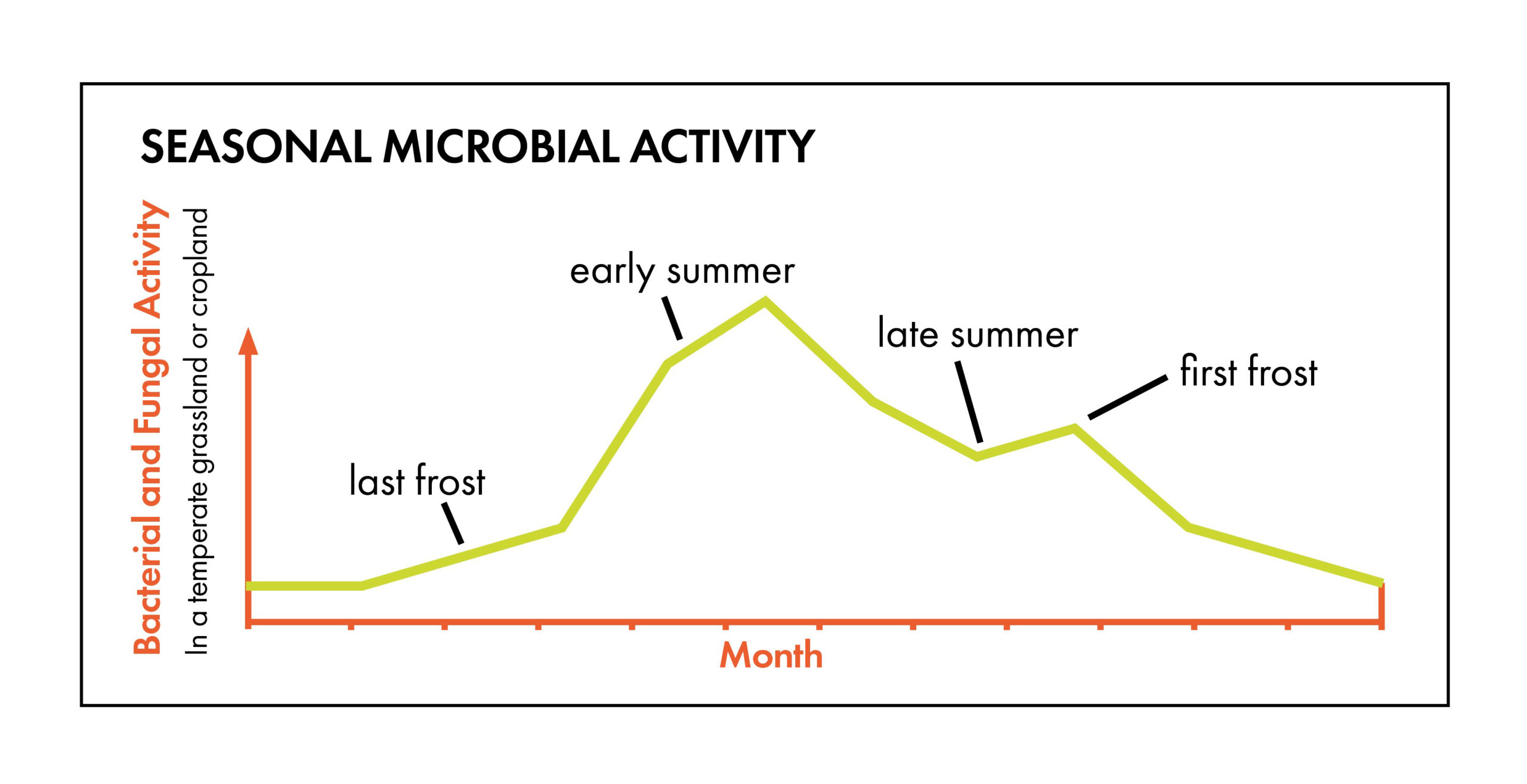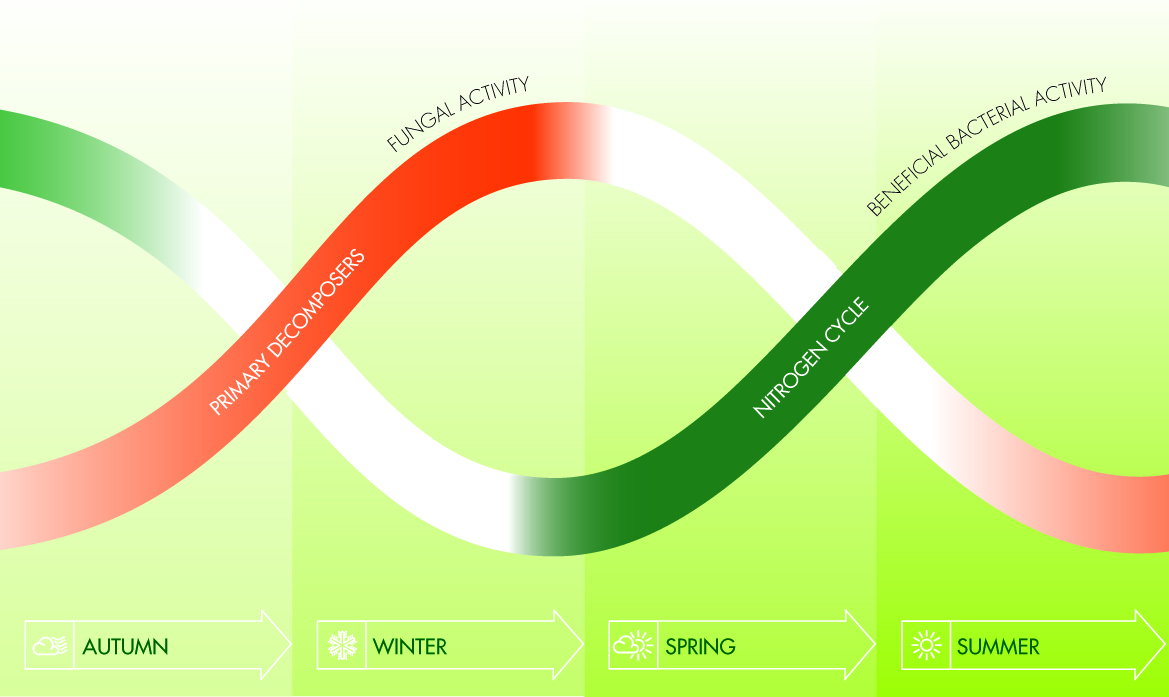Bioguide #6
Soil microbes and the seasons
Synchronising your farming practices with changes in soil microbial populations.
Soil microbial populations change in response to their food sources (organic matter and plant exudates) but also to the climate. The temperature has a profound impact on microbial growth and the types of microbes present in the soil.
We need to align our farming practices to these natural changes in soil microbial populations to enable us to better anticipate and provide for what plants need.
Autumn and Winter
During colder weather in late autumn and winter, soil bacterial populations fall and fungi become dominant (Figure 2). Fungi are eukaryotes (more complex genetically than bacteria) and have several distinct life forms – mycelium or fruiting bodies (mushrooms in some cases) that produce spores. Mycelium from saprophytic fungi can survive over winter and will produce the enzymes required to breakdown the lignified cell walls found in dead plant leaves, crop trash or prunings. Saprophytic fungi work over winter, converting this valuable plant organic matter back into nutrients and humus. This process builds the soil for the following spring that will support plants to start growing again in warmer weather.
Spring and Summer
In spring, soil bacteria numbers increase as the weather warms. In deciduous plants, such as grapevines or fruit trees, early growth is supplied from carbohydrates and nutrients stored in post-harvest crop trash or prunings from the previous autumn. Once these stores are exhausted, the plant requires nutrients from the soil. Interestingly, this phase of the biodynamic calendar corresponds with the growth of many nitrogen-fixing bacteria, just as the plant needs nitrogen for new leaf growth.
If the crop residue (stubble, prunings, litter) has not broken down over winter, saprophytic fungi will increase in spring – utilising soil nitrogen for this function and robbing it from the plant. This can lead to spring nitrogen deficiencies in plants and should be avoided.
Soil microbe populations peak in spring and carry on through summer and autumn, so long as there is enough soil moisture available to maintain microbial growth. In droughts, soil microbial numbers can drop off rapidly.
Using biostimulants to enhance soil microbes
At Biostart, we use soil biostimulant products seasonally to boost the right microbes at the right time in the soil microbial cycle.
In autumn, we apply Digester, a soil biostimulant that boosts saprophytic fungi, to promote breakdown of crop trash and prunings – avoiding nitrogen deficiency in spring. In spring, we apply our root and soil biostimulant Mycorrcin to re-activate soil microbes – supporting plants to start absorbing nutrients from the soil.

Figure 1: Annual changes in soil microbe numbers (from Rodale Institute)

Figure 2: Changes in soil microbe types during the year
Ready to get started?
Check out our range of products dedicated to soil health:

